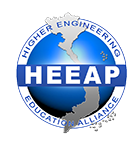The 2012 HEEAP University Program cohort completed its training in the continuing effort to modernize Vietnamese public education in engineering from purely theory-based instruction to active and applied learning techniques Friday, August 31.
Over the past six weeks, 22 qualified faculty from five core Vietnamese university partners experienced and acquired instructional teaching methods in simulated and actual classroom environments from ASU professors from the Ira A. Fulton Schools of Engineering and external industry professionals to apply when they return home at their respective university classrooms.
The program kicked off with a four-week Faculty Development Program, where the visiting faculty was divided into team breakout sessions. The teams were introduced to different learning styles and instruction methodologies, and capped off their knowledge with the hands-on experience of delivering engineering content to an actual ASU class.
“In this program, I learned how to apply and make students engaged,” said Dr. Le Ngoc Quynh Lam, a professor from Ho Chi Minh University of Technology (HCMUT), who was an industry professional before becoming a university instructor. “It made me feel more comfortable and confident to be a lecturer.”
Each member was placed with an ASU faculty mentor, defined by research areas of interest in order to gain consultation on how to integrate HEEAP learning objectives within the courses they teach at home.
Upon completion of the technical training, instructional labs and mentoring components, the University Program faculty members will now return to Vietnam to launch their redesigned course(s).
“I plan to implement what I’ve learned here [at HEEAP] with teamwork and rubrics to conduct the class and evaluate students,” said Dr. Nguyen Van Cuong from Can Tho University (CTU), who has seen positive results from previously employing active learning techniques by coaching his students in small groups.
Dr. Do Duc Nam from the Hanoi University of Science & Technology (HUST), concurred: “We need to redesign the syllabi of the courses for active learning.”
Despite the program’s end, HEEAP ensures ongoing mentoring and coaching sessions between the university partners and ASU faculty mentors through digital media technologies, such as web- and video-conferencing tools.
“We need to continue close cooperation and feedback from HEEAP staff, especially in assessment design, where we do not have any experience,” said Dr. Vo Que Son, a professor from HCMUT.
Overall, the cohort participants believe their students will respond well to the new teaching techniques and methodologies they will introduce to Vietnamese engineering classrooms.
“Students always like fun, so when we implement active learning, I think it will be well appreciated by the students,” said HUST Professor Dr. Truong Thu Huong.

